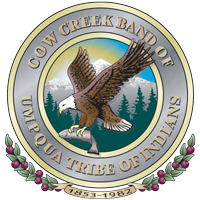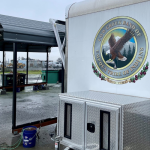Cow Creek Tribe Signs Co-Management Agreement with Umpqua Nat’l Forest
**This article also appears in the January edition of Wik’uuyàm Heetà, the Cow Creek Tribal Newsletter. Tribal members have access to the full library of newsletters, by logging in and clicking here.**
The Cow Creek Band of Umpqua Tribe of Indians has signed two agreements with the U.S. Department of Agriculture Forest Service, allowing co-management of Oregon’s Umpqua National Forest. These constitute one of the largest Forest Protection Act proposals, and the largest Forest Service self-determination agreement to date, signed November 30, 2022.
One of these two agreements in particular focuses on reducing forest fuel concentrations in future wildfires by creating shaded fuel breaks over 37 miles of strategically-important areas of national forest that lie next to Tribal lands, private properties, and wildland urban interface. This should reduce the intensity and severity of wildfires in the treated areas.
As of November, 13 Native American Tribes have signed a total of eleven agreements with the U.S. Department of Agriculture Forest Service, allowing them co-stewardship over Tribal lands in National Parks, including Bears Ears National Monument, the Nez Perce-Clearwater National Forest, Six Rivers National Forest, and Sequoia National Forest. The Forest Service reports that they are in various stages of review with 60 more agreements, involving 45 Tribes.
The Forest Service has affirmed their “commitment to protect Tribal interests in the lands they value as part of their culture and history.”
“These agreements demonstrate our commitment to working together with Federally recognized Tribes,” said Forest Service Chief Randy Moore. “We are at a unique moment in time where we can make a positive difference in the relationships between the federal government and Tribal Nations across the country. We do this by building trust and demonstrating our commitment to uphold our trust and treaty responsibilities to Indian Tribes with concrete actions. We’ve made a lot of good progress already, and we will continue to embed this commitment within our agency and organizational culture follow through.”
These agreements are due, in part, to the recent Joint Secretarial Order 3403, which instructs USDA and DoI related agencies to fulfill trust obligations with federally-recognized Tribes.
Under the U.S. Government, the Forest Service is tasked with managing over 193 million acres of land and waters that, in pre-contact times, were the homes of Native American Tribes. In respect for the long-standing government-to-government relationships with and sovereignty of federally-recognized Tribes, these co-stewardship agreements seek to preserve a diverse array of Trial interests, resources, and beliefs. To do so, the agreements allow for approaches to managing national forests and grasslands that take into consideration the traditional practices and sacred places from Tribal history.
Some of the goals of these co-management agreements include restoring fire-adapted ecosystems, integrating traditional practices into land management decisions, caring for forests and watersheds, and protecting Tribes’ cultural practices, treaty rights, and more.





